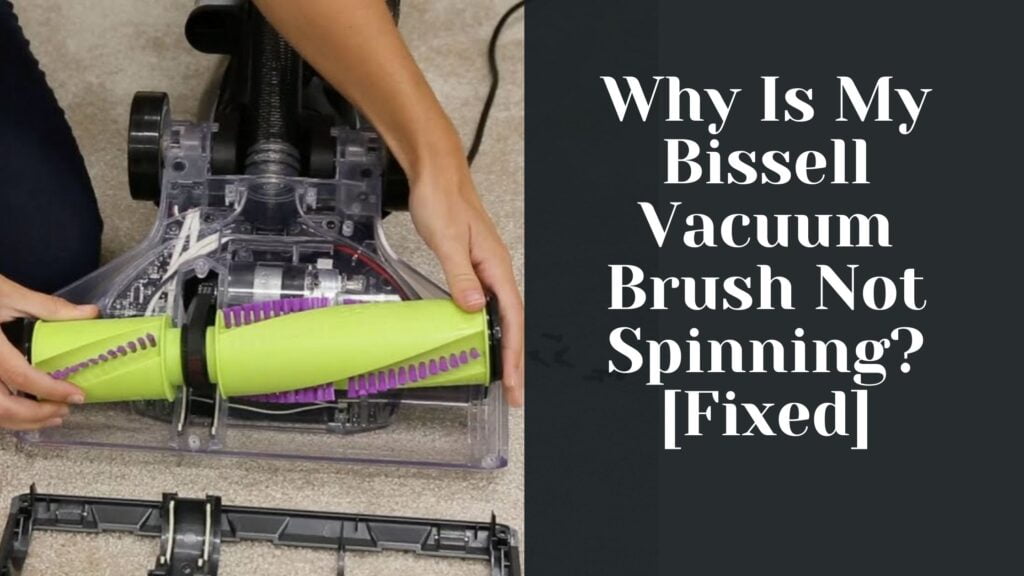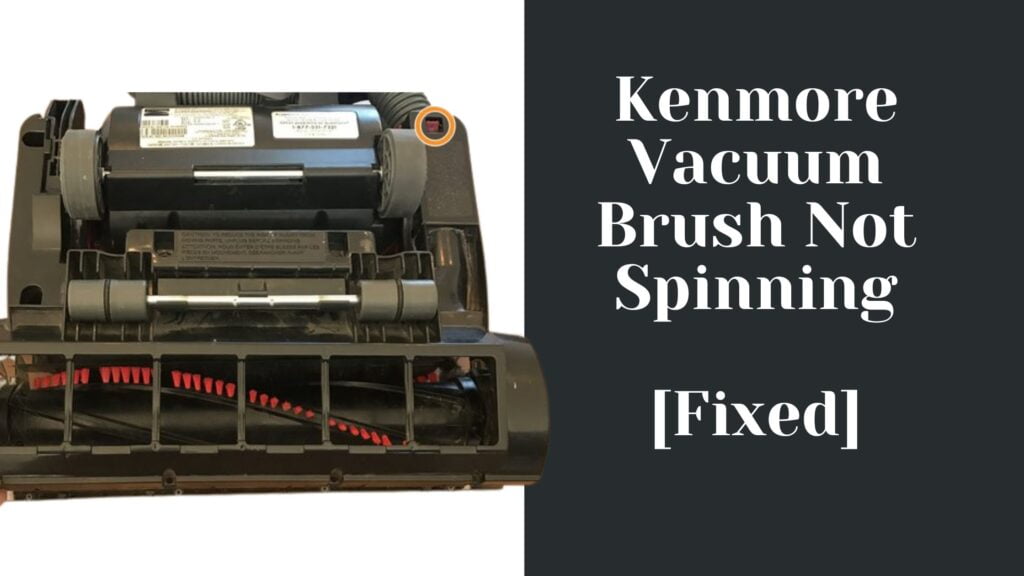If you’ve ever found your Hoover vacuum challenging to push across carpet, you’re not alone. It’s a common issue many users face and it’s one that can be quite frustrating. Your vacuum should glide across the floor with ease, picking up dirt and debris without requiring Herculean strength. So why does it sometimes feel like you’re trying to move a boulder rather than cleaning your carpets?
The answer typically lies in a few key areas: incorrect height settings, worn-out or damaged rollers, or issues with the belt that drives the brush roll. All these factors can make your Hoover vacuum difficult to push on carpet.
Now don’t worry! You’re about to discover how each of these problems can be diagnosed and fixed so that pushing your vacuum across the carpet becomes as effortless as it ought to be. And remember – maintaining optimal performance of your Hoover vacuum isn’t just about convenience; it also ensures more effective cleaning for a healthier home environment.
Understanding Why Your Hoover Vacuum Is Hard to Push on Carpet
Isn’t it frustrating when your trusty Hoover vacuum suddenly becomes hard to push on your carpet? You’re not alone. Many homeowners have faced this issue, and it’s often due to a few common reasons.
Firstly, the setting of your vacuum cleaner may not be adjusted correctly for the type of carpet you have. If you’ve got a high-pile or plush carpet, using a low setting can make the vacuum hard to maneuver. Be sure to adjust your Hoover’s height setting appropriately for best results.
Secondly, your vacuum’s brush roll could be causing the problem. It might be jammed with hair or debris, making it harder for you to push the machine across the carpet. Regular cleaning and maintenance of these components can fix this issue easily.
Thirdly, check if there’s a blockage in your Hoover’s airflow pathway. Any obstruction will limit suction power and make it feel like you’re pushing against resistance when trying to clean your carpets.
Lastly, let’s not forget about potential mechanical issues such as worn-out belts or broken wheels that might hinder movement as well.
- Vacuum Setting: Check if it’s set correctly based on carpet type.
- Brush Roll: Ensure it isn’t clogged with hair or debris.
- Airflow Blockage: Look out for any obstructions limiting suction power.
- Mechanical Issues: Inspect for worn out belts or broken wheels causing trouble in movement.
Being aware of these factors is half the battle won! With regular checks and timely maintenance, you can keep enjoying hassle-free cleaning sessions with your Hoover vacuum cleaner on any carpet type!
Types of Hoover Vacuums and Their Performance on Carpets
When it comes to household cleaning, Hoover vacuums have been a reliable choice for many homeowners. Let’s delve into the different types of Hoover vacuums and see how they fare on carpets.
You’ve probably heard about Hoover Upright Vacuums. They’re powerful, built to tackle deep-seated dirt within your carpets. It uses WindTunnel Technology that removes surface debris and also gets down to embedded dirt. However, some users have mentioned that these models can sometimes be difficult to push on thicker pile carpets.
Next up are the Hoover Canister Vacuums; known for their maneuverability, they’re great at reaching those hard-to-clean places under furniture or above floor level. They’re versatile with a variety of attachments but might not offer the same depth of clean as upright versions on high-pile carpeting.
Let’s not forget about Hoover Stick Vacuums – lightweight options perfect for quick cleanups or smaller spaces. These cordless machines boast impressive suction power considering their size, but might struggle with heavy-duty carpet cleaning compared to their larger counterparts.
Lastly, we have Hoover Carpet Cleaners, which aren’t traditional vacuum cleaners but deserve mention here due to their specific performance on carpets. These machines wet-clean your carpet using water and cleaning solution – ideal for stain removal or deep cleans but not meant for everyday use like other vacuum styles.
Each type has its strengths and potential drawbacks when it comes to dealing with carpets:
| Vacuum Type | Strengths | Potential Drawbacks |
|---|---|---|
| Upright | Powerful suction; Deep-cleaning capability | Can be hard to push on thick carpets |
| Canister | Maneuverable; Versatile attachments | Might lack depth cleaning in high-pile carpet |
| Stick | Lightweight; Ideal for small spaces/quick cleanups | May struggle with heavy-duty carpet cleaning |
| Carpet Cleaner | Excellent at stain removal/deep cleans | Not meant for daily use |
In the end, your choice will depend largely upon your unique home environment and needs.
Common Issues Making Your Hoover Vacuum Hard to Push
Ever wondered why your Hoover vacuum’s becoming a workout machine rather than an efficient cleaning tool? Sometimes, it might feel like you’re pushing a boulder instead of gliding smoothly across your carpet. Well, there are several reasons why this could be happening.
Firstly, check if the height adjustment on your vacuum is set correctly. Most Hoover vacuums have adjustable settings for different floor types. If it’s set too low for your carpet pile, you’ll find it tough to push around. Try adjusting the setting and see if that makes a difference.
Secondly, take a look at the rotating brush roll. If it’s clogged with hair or other debris, in fact any junk really – it can slow down the rotation and make pushing harder. It’s best to regularly clean out these blockages to keep things running smoothly.
Thirdly, consider the age and condition of your vacuum belt. Over time and with regular use (or misuse), belts wear out or stretch out affecting overall performance of your cleaner. This can make pushing more difficult as well because when they don’t grip properly anymore, they don’t turn the brush roll effectively either.
Lastly but importantly, don’t overlook potential wheel problems. Worn out wheels or ones stuck with stray threads or hairs can hamper movement greatly making vacuuming more strenuous than needed.
Remember! Regular maintenance is key here – keeping every part clean and replacing worn-out ones timely will ensure smooth operation of your Hoover vacuum on carpets and keep those muscles from straining unnecessarily.
How the Carpet Type Affects Your Hoover Vacuum’s Performance
To kick things off, let’s talk about how your carpet type can play a significant role in your Hoover vacuum’s performance. Let’s be honest, not all carpets are created equal. You’ll find that some are thicker and plushier while others are thin and tightly woven. Each carpet type presents its unique challenges for a vacuum.
If you’re dealing with high pile or shaggy carpets, it might feel like pushing your Hoover vacuum is akin to a workout at the gym! The deep fibers of these luxurious carpets create resistance that can make it difficult for your Hoover vacuum to glide smoothly across. Despite having powerful suction capabilities, it could still struggle on such surfaces.
On the other hand, low-pile or flat-woven rugs present fewer difficulties. They allow easier movement across their surface due to their close-knit fiber structure. However, they might pose another challenge: embedded dirt and dust particles. These tiny intruders can lodge themselves deeper into the fibers because of heavy foot traffic compacting them down over time.
Berber carpets? Those present a whole new challenge! Their looped structure traps more dirt than you’d imagine possible! Consequently, while your Hoover vacuums may glide easily across its surface thanks to its tight weave pattern, extracting trapped dirt from within those loops may prove tricky.
Lastly, let’s discuss cut pile carpets – essentially Berber without the loops – which can range from dense (velvet) to loose (frieze). Here again, ease of push/pull will depend on density but regardless of texture; rest assured your trusty Hoover will dig out those hidden allergens!
- High Pile Carpets: Harder to push
- Low Pile Carpets: Easier motion but embedded particles
- Berber Carpets: Easy motion but trapped dirt in loops
- Cut Pile Carpets: Variable difficulty based on density
Remember this – not every vacuum is designed for every carpet type. It’s important that you understand how different types affect performance so you can choose a model best suited for YOUR needs!
Effective Solutions to Improve Hoover Vacuum Maneuverability
Sometimes, it’s hard to push your Hoover vacuum on the carpet. Don’t fret; you’re not alone in this struggle. There are effective solutions available that can greatly improve your vacuum’s maneuverability.
It all starts with regular maintenance of your machine. The first thing you should consider is checking and cleaning the brush roll. Hair, threads, or other debris can get tangled around it, making it harder for the vacuum to glide smoothly across carpets. Simply remove these obstructions and put back the brush roll properly.
The next step involves adjusting the height setting of your vacuum cleaner. Many vacuums come with a height adjustment feature designed for different types of flooring surfaces. If yours is set too low for carpet cleaning, pushing it becomes a tough task indeed! Adjusting this setting to an appropriate level will make a significant difference in how easily you can move your Hoover vacuum.
Furthermore, inspecting and replacing the belt of your Hoover vacuum as necessary is another effective solution to address this issue. A worn-out or loose belt doesn’t provide enough tension for the brush roll causing difficulty in moving across carpets.
Lastly, don’t overlook the importance of routinely emptying out the dust bag or bin of your Hoover Vacuum Cleaner. When they’re nearing full capacity, these containers add extra weight which contributes to making it more difficult to push around.
These tips aren’t just theoretical advice! They’ve been tried and tested by countless users who faced similar issues with their vacuums being hard-to-push on carpets:
- Regularly clean up and maintain your Hoover Vacuum Cleaner.
- Check its height settings.
- Inspect and replace its belt when needed.
- Empty out its dust bag/bin frequently.
By following these simple yet effective solutions, you’ll notice a marked improvement in how effortlessly you can maneuver your beloved household helper – Your trustworthy Hoover Vacuum Cleaner!
Tips for Maintaining Your Hoover Vacuum for Optimal Performance
Keeping your Hoover vacuum in top-notch condition isn’t as daunting as you might think. With the right care and attention, it can run like a dream on all types of surfaces, from hardwood to high-pile carpeting. Here are some pro tips to help you get there:
First up, check the bag or dust bin regularly. You’d be surprised how quickly these can fill up! When they’re around 2/3 full, it’s time to empty them out. If you let them overfill, your vacuum’s suction power will decrease significantly.
Next on the list is filter maintenance. Most Hoover vacuums have two filters – a pre-motor filter and a post-motor HEPA filter. Both should be cleaned at least every six months (more frequently if used heavily), but always refer to your user manual for specific instructions.
And don’t forget about your vacuum’s brush roll! This component often gets tangled with hair and debris, making it hard for the vacuum to move smoothly on carpets or rugs. To prevent this issue, clean the brush roll after each use.
Lastly, inspect the belts and hoses periodically. These parts can wear down over time and may need replacement now and then. If you notice any cracks or tears in these components, order replacements ASAP.
Here are these points summarized:
- Regularly empty out bag/dust bin when 2/3 full.
- Clean both filters at least twice annually.
- Clean brush roll after each use.
- Inspect belts and hoses regularly; replace if needed.
By following these simple steps consistently, you’ll ensure that your Hoover vacuum performs optimally for years to come – no more struggles with pesky carpet fibers!
Professional Recommendations for Difficult-to-Push Vacuums
When your Hoover vacuum feels more like a workout machine than a cleaning tool, it’s time to take action. There are a few things you can do to make your vacuuming chores less strenuous.
First off, check your vacuum’s height setting. It might be set too low for the carpet you’re cleaning. The lower the setting, the closer the vacuum is to the carpet and this could make it hard to push. Try adjusting it to a higher setting and see if that makes a difference.
Next up, inspect the roller brush. If it’s clogged with hair and debris, it won’t rotate as smoothly making your task tougher than necessary. Cleaning or replacing the roller brush may solve your problem.
Here are some other professional recommendations:
- Check for blockages: A blocked hose or filter can cause suction problems making your Hoover harder to push.
- Replace or clean filters: Dirty filters reduce suction power which in turn makes pushing hard.
- Maintenance Regularly: Regular maintenance ensures optimal performance of your Hoover Vacuum.
Don’t forget about those wheels either! They need care just like any other moving part on your machine. Ensure they’re not stuck or damaged as this will definitely make maneuvering difficult.
Lastly, consider seeking professional help if you’ve tried everything but still find yourself struggling to push that Hoover around! You don’t have to wrestle with it forever – sometimes an expert eye can spot issues that aren’t immediately apparent.
Remember, while vacuums are designed for convenience and efficiency, they’re not one-size-fits-all appliances. Be patient in finding what works best for you and keep these tips handy next time you find yourself pushing against resistance from your trusty Hoover Vacuum!
Conclusion: Ensuring Smooth Operation of Your Hoover Vacuum
So, you’ve made it to the end of this comprehensive guide. Now you’re well-equipped with all the knowledge and tips to keep your Hoover vacuum running effortlessly on your carpet. It’s not a complicated task if you’ve got the right information at your fingertips.
There are key takeaways to remember for maintaining optimum performance:
- Regularly clean and replace filters. Clogged or worn-out filters can drastically affect your vacuum’s ability to glide smoothly on carpets.
- Choose the correct setting. Adjusting your vacuum to the appropriate height and power settings for different carpet types is crucial.
- Keep an eye on the brush roll. Over time, hair, string, or other debris can wrap around it and cause resistance when pushing.
And don’t forget about maintenance! Routine servicing isn’t just about improving ease of use; it also extends the lifespan of your machine.
Here’s a basic schedule for typical upkeep tasks:
| Task | Frequency |
|---|---|
| Filter cleaning | Every 2 weeks |
| Filter replacement | Every 6 months |
| Brush roll inspection/cleaning | Monthly |
Finally, always remember that using genuine Hoover parts during replacements ensures compatibility and longevity.
In conclusion, with these practices in place, pushing your Hoover vacuum over any carpet will be no more strenuous than a walk in the park! You’ll be able to maintain a clean home effectively while ensuring the durability of your trusted appliance.





















